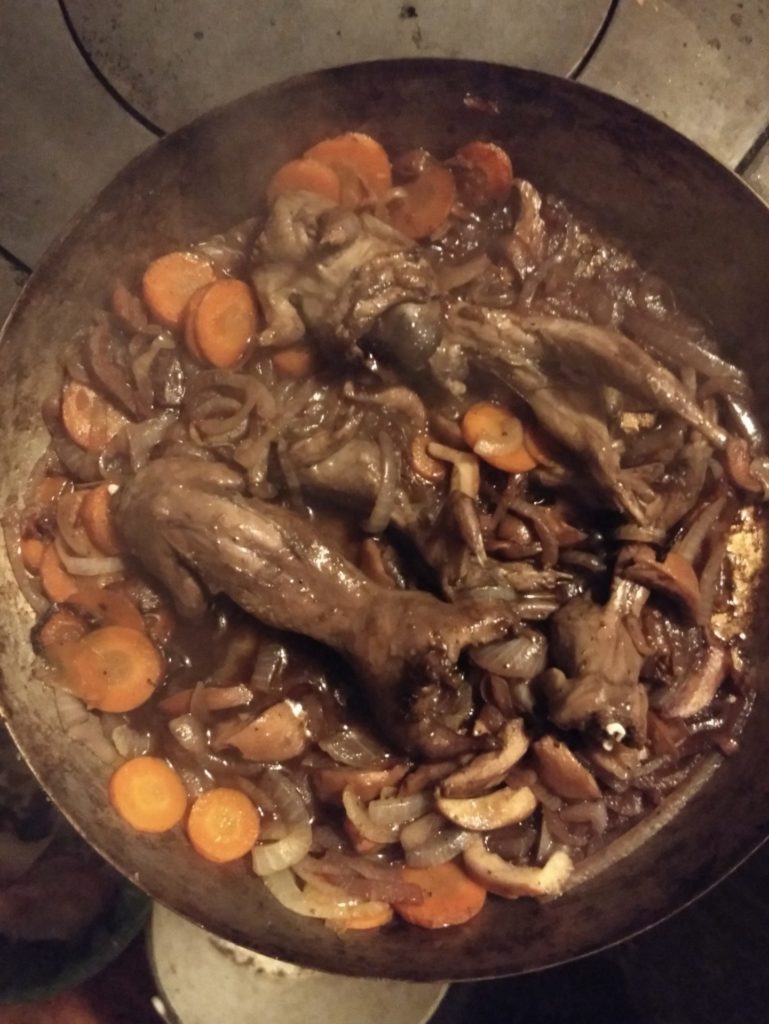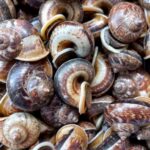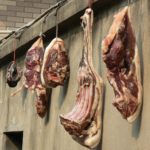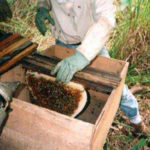

Before dormice can be skinned, processed, and cooked – they have to be caught. That is an art of its own and is described in an article under this Link here.
Skinning and processing of dormice is done similarly to other mammals, but due to its smaller size, it is done in a simplified way. First, the dormouse is laid on its back towards the skinner. Hind legs will be spread apart, and one long cut from the base of one leg to the other over the belly will be done with a sharp knife. After that, the skin is loosened from the meat on both legs, and the skinner’s finger loosens the skin between the back of the dormouse. As a next step, all four legs will be cut off at the ankles.




After that, the skin will be removed towards the tail, and the root of the tail will be taken out from the bushy fur tail. Now, the fur will be pulled over the body towards the skull, over the remaining front legs, and completely pulled off the skull. Whiskers, eyes, and muzzle will remain on the skinned skull, which gives it a Mickey Mouse appearance. The complete skin is loose now, and the skull can be cut off for civilized cooking or left on in survival situations. After that, the anus is ringed, and the small intestines be drawn out of the hind body cavity. The length of these intestines is about one meter from the stomach. The cleaned-out gut can be dried and later used for bindings or as part of a fishing line.
Further processing of dormice

Depending on the age and physical condition of the animal, more or less fat will be stored below the skin, on the body, and inside the body cavity around the kidneys. This fat should be scrapped off and stored for future use.
After opening the body cavity, all remaining intestines, stomach, and reproductive organs should be removed and are of no further use. Lungs and kidneys should be left in place and be eaten. During beechnut mast years, the liver is pleasant to eat, whereas when dormice mainly feed on acorns, the liver becomes very bitter.


After skinning and processing of dormice, we got three useable parts: skin, meat, and fat. Only the small intestines are of further use from the remaining parts for the purposes mentioned above. As the dormouse meaty body is relatively small, further split-up of meaty pieces is unnecessary.
Roasting dormice on a spit


There are two main cooking styles of the body: spit roasting and pan frying. Spit roasting is the simplest form. Put the body on a green hazel stick and roast over the coals. Rip cage can be chewed as a whole due to the thin rips and all other parts being gnawed off the bones. On some Croatian islands, it is customary to put the spit-roasted dormouse on a slice of bread and eat it like a sandwich. It is deliciously tasting and smelling meat, similar to the leg meat of a chicken.
Frying dormice in a pan

And for pan frying, onions are fried in hot oil. Whatever vegetable is available can be added, and the meat should be nicely browned in the sizzling pan. Some flour and wine will create a tasty sauce. I prefer this style even more than just roasting on a spit.
Use of dormouse skins
The skin has nice, fluffy hair; although it is thin, it is pretty tough. Slovenians, therefore, produced in former times a traditional head-dress called ‘Polhovka.’ For such a headgear, about 30 – 35 tanned dormouse skins of average size were necessary. At the beginning of 2022, the last maker of such hats died at Kočevje. The local museum curator provided this information.
Use of dormouse fat and oil
Dormouse fat is semi-liquid and stays that way up to -35 degC. And dormice oil processed from fat has unconfirmed medical healing properties. According to this weblink, it ‘…rubs in easily and is quickly absorbed into the skin, moisturizes the skin, does not leave a greasy feeling, and is especially very stable.’
Lessons learned from skinning and processing of dormice in Slovenia
- Dormice are easy to skin. It is essential, however, not to cut initially too deep into the the belly skin
- The root of the tail has to be pulled out of the pelt cautiously
- In a survival situation, all parts of the animal can be either used or eaten
- Dormouse meat tastes deliciously, especially when pan-fried.
.





